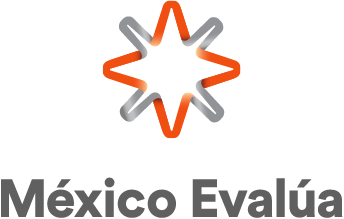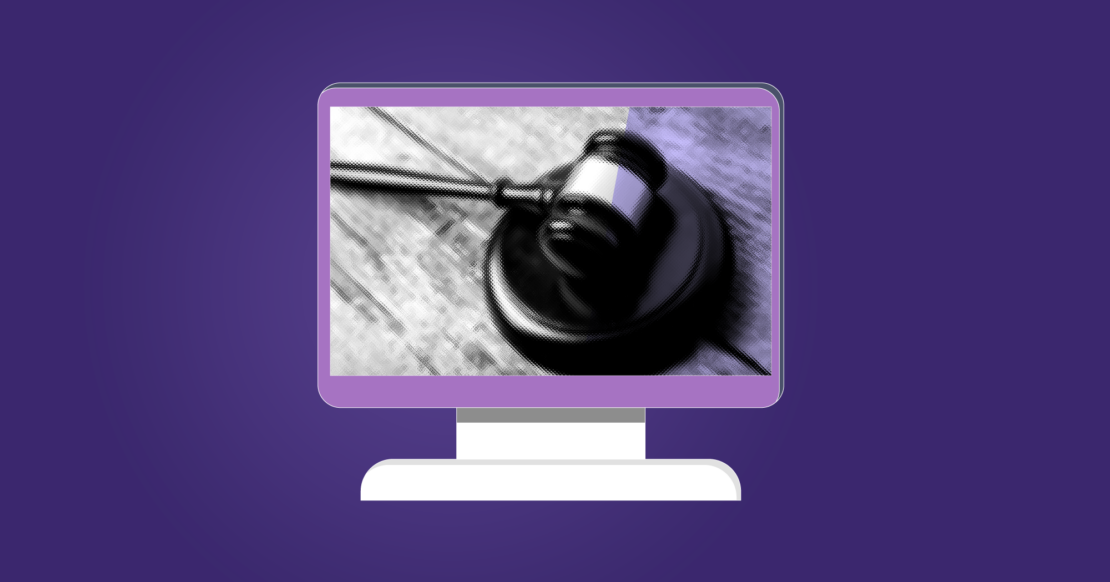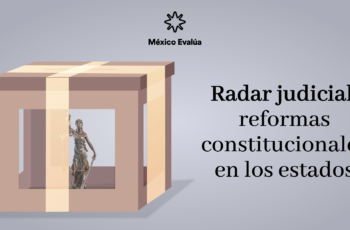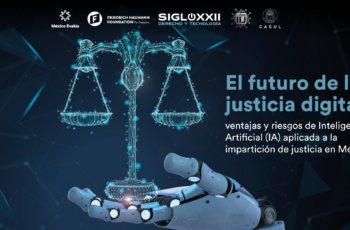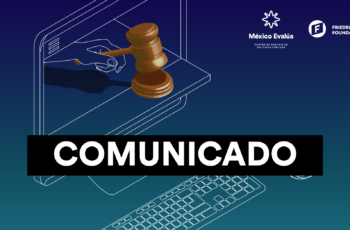How to resume the administration of justice?
By Laurence Pantin (@lpantin) and Miguel Carbonell (@MiguelCarbonell) | Proceso
Suspending the procedural deadlines and their work was a decision made by the judicial powers of the country in the middle of the emergency, without knowing precisely, obviously, the impact on public health that it was going to represent, and without being able to calculate the scope of the measures they were taking.
Today we know more about the Covid-19 pandemic and how to counter it. Therefore, the scenery is beginning to be defined for the urgent reopening of the courts, an operation that must be carried out with great care and adequate precautions.
The very fact that these institutions suspended the vast majority of their services for weeks implies that, as soon as they resume their activities, the demand will be very high. And if the courts are already crowded places, it is not difficult to imagine what will happen when they reopen their doors. It seems difficult that the social distancing measures suggested by the health authorities would be respected.
This is causing great concern among judicial employees, but also among litigants, who do not want to risk their lives doing their job. How can we avoid it? First, it all depends on what one means by “opening court doors”. As Richard Susskind —a British lawyer who has specialized in analyzing how to modernize the profession— points out in Online courts and the future of justice (Oxford University Press, 2019), courts are more relevant for the services they offer to citizens, than by the physical place they represent. Although it is understood that part of the activity of the jurisdictional bodies has to be carried out in person, and for this reason, the judicial powers have had to provide on-site guards to attend to some procedures or carry out certain types of processes, what we learned (or confirmed) during this contingency is that many activities can also be carried out remotely, through the use of new technologies.
This was understood by some judicial powers, which have begun to resume some of their services through online procedures and processes. For example, although the legal terms and deadlines are still suspended —with the exception of the constitutional deadlines—, the Judicial Branch of Nuevo León re-established its administrative and jurisdictional work in all matters since May 6th. Thus, it established the obligation, for the judges, to issue their resolutions and sentences in the matters of their knowledge, as well as to seek their execution. To do this, it defined rules to hold hearings through videoconferences, enabled an online module as well as a telephone module so that the parties and lawyers can request or cancel summonses and notifications, and also implemented a Virtual Parties Registry for the presentation of electronic lawsuits and promotions.
Similarly, the Judicial Branch of the State of Mexico issued guidelines to restore part of the activities in all matters, thanks to the expansion of the services offered through the electronic court and the use of remote hearings via electronic platforms. The Judiciary Council also reformed the regulations of Family Coexistence Centers to establish modalities of supervised electronic coexistence and issued guidelines for the remote operation of the State Center for Mediation, Conciliation and Restorative Justice during the contingency.
The two judiciaries were able to resume these activities because they already had advanced technological development: virtual courts that allow litigants, defenders and public ministries to file motions and sometimes even lawsuits, as well as check their status online; electronic files that allow judicial employees to telecommute.
Time to be creative and flexible
Of course, the development of technological tools of this magnitude represents millionaire investments. But not all technological solutions require such an important expense; what they do need is creativity, a spirit of innovation and a willingness —even political— to think of new forms of work aimed at expanding access to justice.
For example, although it does not have an electronic signature or an electronic court, the Judicial Branch of Querétaro authorized the reception of promotions and procedural documents via email, and issued very simple guidelines for it.
The same with hearings by videoconference. Although some judicial powers have developed their own platforms to carry them out, most of the state judicial powers, as in the rest of the world, do not have their own platforms, so they began to use commercial platforms such as Zoom or Skype, to name the most common ones [1]. But considering that not all procedures can be carried out digitally, that some documents must be presented physically and that not all people have access to electronic means or the training to use them, some judicial powers have taken special measures to adjust their customer service guidelines to the new environment. For example, the Judicial Branch of Nuevo León provided strict modalities for holding urgent face-to-face hearings in cases where they cannot be held remotely, established rules for the use of official mailboxes to receive documentation, and enabled a system to request appointments to view physical records.
Therefore, in parallel with the provision of technological solutions, if we want to prevent the physical reopening of the courts from involving an influx of people similar to that of a department store during Black Friday, measures must also be implemented to better order the flow of people that are going to court. For example, an appointment system could be established, which would be requested online or by phone, to deal with procedures that the public that goes to the courts needs to resolve, in a similar way to those offered by the SAT to carry out procedures or obtain advice.
As we said, it is essential that the judiciary be creative in imagining measures that allow us to deal with the new conditions in which we are going to have to operate when the confinement ends in the coming weeks, months and even years — given the possibility of new waves of Covid-19—. But it is also necessary that the users of the justice administration services have an open mind to adapt their way of working to these new conditions.
It is natural that concerns arise about the way in which procedures and processes are being carried out at this time, since they have to meet certain standards. So, it is essential that the use of new technologies guarantees that those standards are met.
This last point is essential to avoid controversies such as the one resolved by the Superior Chamber of the Electoral Tribunal of the Judicial Power of the Federation, validating an agreement approved on April 22nd by the plenary session of the Electoral Tribunal of Coahuila, through which it authorizes, as an extraordinary measure and temporary in the context of the health contingency, the use of new technologies for the presentation and substantiation of means of challenge, while defining its guidelines. This agreement had been challenged by the Coahuilense Revolution Party, arguing, among other things, that it violates the principle of legal certainty, by allowing the petitioners’ signature to be ratified by videoconference without any certainty that it is one of the parties, and by authorizing notifications by email. It also questions the authorization of the use of Zoom to hold videoconferences, since this tool has been pointed out for its security flaws.
Now, it is natural that concerns arise about the way in which procedures and processes are being carried out at this time, since they have to meet certain standards. So, it is essential that the use of new technologies guarantees that those standards are met.
But it must also be avoided that the reopening of the justice administration services is accompanied by an avalanche of resources against the decisions that are now being made through these new tools, with the argument that the process was not in accordance with the standards we just mentioned. This would represent a waste of time and invaluable resources, and more so at this time.
For this reason, it is necessary that the technological innovations that are being developed to facilitate the administration of justice in times of Covid-19, and beyond this contingency, have a legal basis that defines guidelines for their use, guarantees due process and ensures the transparency and accountability necessary to give certainty about the procedures and processes that are attended. Legislators would be well advised to support these efforts. In fact, the legislative powers seem to have been largely absent in these weeks and months of the pandemic; but their work is essential to strengthen what is being done in judicial matters, so that we have a legal framework that generates certainty and does not allow bad lawyers to take advantage of the lack of regulatory provisions to try to reverse the decisions made under the protection of digital justice.
What is at stake here is not only a matter of public health, but also the transformation of the administration of justice and the expansion of access to justice. And more: having technological tools that support the administration of justice could also reduce spaces for corruption, by minimizing contacts between lawyers and judicial employees, something that the reform of the Federal Judicial Power proposed a few weeks ago by Minister Arturo Zaldívar seeks, and something that our legislators are interested in. No matter how you look at it, we need to prioritize this issue.
[1] However, this represents a challenge, due to the security problems that these applications sometimes present (as we will see later) or because, not having been specially developed to carry out judicial hearings, they do not necessarily present all the functions necessary for the optimal development of the processes.



